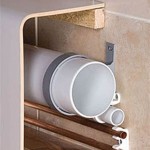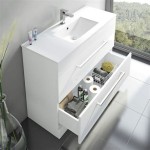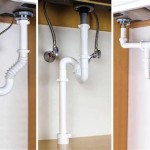What Causes a Bathroom Faucet to Lose Pressure?
Low water pressure in a bathroom faucet can be a frustrating inconvenience, hindering everyday tasks like washing hands or brushing teeth. The problem can stem from various sources, ranging from simple, easily resolvable issues to more complex plumbing concerns. Understanding the potential causes is the first step in diagnosing and addressing the issue effectively.
Diagnosing low water pressure begins with observation. Is the low pressure affecting only one faucet, multiple faucets in the bathroom, or all water fixtures throughout the house? This observation helps narrow down the source of the problem, differentiating between a localized issue and a broader plumbing problem.
Before undertaking any repairs, it is advisable to shut off the water supply to the faucet. This prevents potential water damage during the troubleshooting process. Typically, shut-off valves are located under the sink, supplying hot and cold water to the faucet.
Mineral Buildup in the Aerator
The aerator, located at the tip of the faucet, is responsible for mixing air with the water stream, creating a smoother, non-splashing flow. However, this same aerator is also susceptible to mineral buildup, especially in areas with hard water. Over time, deposits of calcium and other minerals can accumulate, restricting water flow and significantly reducing water pressure.
The process of cleaning a mineral-clogged aerator is relatively straightforward. First, unscrew the aerator from the faucet spout. In most cases, this can be done by hand, but sometimes a wrench might be necessary. Take care not to damage the faucet finish during this process.
Once removed, the aerator typically consists of several small components, including a mesh screen and a flow restrictor. Rinse each component thoroughly under running water to remove any loose debris. For more stubborn mineral deposits, soak the components in a solution of white vinegar for several hours or overnight. Vinegar's acidity helps dissolve mineral buildup.
After soaking, scrub the components with a small brush, such as an old toothbrush, to remove any remaining residue. Rinse them thoroughly again before reassembling the aerator. Once reassembled, screw the aerator back onto the faucet spout and test the water pressure. If the aerator was the primary cause of the low pressure, the flow should be restored.
If the aerator continues to be a problem despite cleaning, it may be necessary to replace it. Aerators are inexpensive and readily available at most hardware stores. When purchasing a replacement, ensure it is compatible with the specific faucet model.
Clogged Faucet Cartridge or Valve
Another common cause of low water pressure in a bathroom faucet is a clogged faucet cartridge or valve. These components control the flow of water through the faucet, and over time, they can accumulate sediment, mineral deposits, or debris, restricting water flow.
The procedure for cleaning or replacing a faucet cartridge varies depending on the faucet type. Single-handle faucets typically use a cartridge, while two-handle faucets use separate valves. Consult the faucet manufacturer's instructions or online resources for specific guidance on disassembling the faucet and accessing the cartridge or valve.
Once the cartridge or valve is accessible, inspect it for any signs of damage or buildup. If there is visible debris, clean it with a soft brush and a solution of white vinegar. For heavily clogged components, soaking in vinegar overnight may be necessary.
If cleaning does not restore proper water flow, the cartridge or valve may need to be replaced. These components are available at most hardware stores, and it is crucial to purchase the correct replacement part for the specific faucet model. Take the old cartridge or valve with you to the store to ensure a proper match.
Replacing a faucet cartridge or valve involves removing the old component and installing the new one in its place. Follow the manufacturer's instructions carefully to ensure proper installation. Incorrect installation can lead to leaks or further damage to the faucet.
Problems with the Shut-Off Valves
The shut-off valves located under the sink are responsible for controlling the water supply to the faucet. These valves can sometimes become partially closed or clogged, resulting in reduced water pressure. Over time, sediment and mineral deposits can accumulate within the valve, restricting water flow. In some cases, a rubber washer inside the valve can deteriorate and partially block the water passage.
To check the shut-off valves, fully open them by turning the handles counterclockwise. If the handles are difficult to turn, they may be corroded or seized. In this case, applying a penetrating oil lubricant can help loosen them. Allow the lubricant to soak in for several minutes before attempting to turn the handles again.
If the shut-off valves are still difficult to operate or if they appear to be heavily corroded, they may need to be replaced. Replacing a shut-off valve involves shutting off the main water supply to the house, disconnecting the old valve, and installing a new one. This is a more complex repair that may require the assistance of a qualified plumber.
Another potential problem with shut-off valves is that they may not be fully open. Sometimes, especially after work has been done on the plumbing system, the valves may be inadvertently left in a partially closed position. Ensure that both the hot and cold water shut-off valves are fully open to maximize water flow to the faucet.
If the shut-off valves are the ball-type, ensure the handle is parallel with the water pipe. If the handle is perpendicular to the water pipe, the valve is in the off position, restricting water flow.
Clogs in the Water Supply Lines
The water supply lines that connect the shut-off valves to the faucet can also become clogged over time, leading to reduced water pressure. These lines are typically made of flexible braided stainless steel or copper tubing, and they can accumulate sediment, mineral deposits, or debris internally.
To check the water supply lines, first shut off the water supply to the faucet at the shut-off valves. Disconnect the water supply lines from both the shut-off valves and the faucet tailpieces. Inspect the inside of the lines for any signs of blockage.
If there is visible debris, flush the lines thoroughly with water. A garden hose can be used to force water through the lines and dislodge any stubborn blockages. For more stubborn clogs, a plumber's snake or a flexible wire can be used to break up and remove the debris.
If the water supply lines are severely corroded or damaged, they may need to be replaced. Replacement water supply lines are readily available at most hardware stores. When purchasing replacements, ensure they are the correct length and diameter for the specific faucet installation.
When reconnecting the water supply lines, ensure that all connections are tight and secure to prevent leaks. Use Teflon tape on the threads of the connections to create a watertight seal.
Problems with the House's Plumbing System
In some cases, low water pressure in a bathroom faucet may be a symptom of a more widespread problem in the house's plumbing system. This could include issues with the main water supply line, a pressure regulator, or other plumbing fixtures.
If low water pressure is experienced throughout the house, the first step is to check the main water supply line. Ensure that the main shut-off valve is fully open. Also, check for any signs of leaks or damage to the main water supply line. Leaks can significantly reduce water pressure throughout the house.
If the house has a pressure regulator, it may be malfunctioning and reducing the water pressure. Pressure regulators are typically located near the main water meter. They are designed to maintain a consistent water pressure throughout the house, but they can sometimes fail or become clogged, resulting in low pressure.
Another potential problem is galvanized steel pipes in older homes. Over time, these pipes can corrode internally, reducing the diameter of the pipe and restricting water flow. Replacing galvanized steel pipes with copper or PEX piping is a more extensive plumbing project that may require the assistance of a qualified plumber.
Simultaneous use of multiple water fixtures can also contribute to low water pressure. If multiple people are showering, flushing toilets, or running appliances at the same time, the water pressure may drop temporarily. This is more common in homes with older or undersized plumbing systems.
If the problem persists after checking the aforementioned issues, it is advisable to consult a qualified plumber. A plumber can diagnose the problem accurately and recommend the appropriate repairs to restore proper water pressure.

What Causes Low Water Pressure In Bathroom Sink 5 Ways To Fix It November 2024

What Causes Low Water Pressure In Bathroom Sink 5 Ways To Fix It November 2024

What Causes Low Water Pressure Home Matters Ahs

Faucet Has Low Water Pressure After Repair Fix

Why Did I Lose Water Pressure In My Kitchen Sink

What Causes Loss Of Water Pressure In The Bathroom Sink Ggr Home Inspections

What Is Causing Your Low Water Pressure Reilly Plumbingreilly Plumbing

Water Dripping From Faucet Why And How To Fix

What Causes Low Water Pressure In The Whole House Birnie Plumbing Drains

Potential Causes Of Low Plumbing Water Pressure My Buddy The Plumber Electric Heating Air
Related Posts







